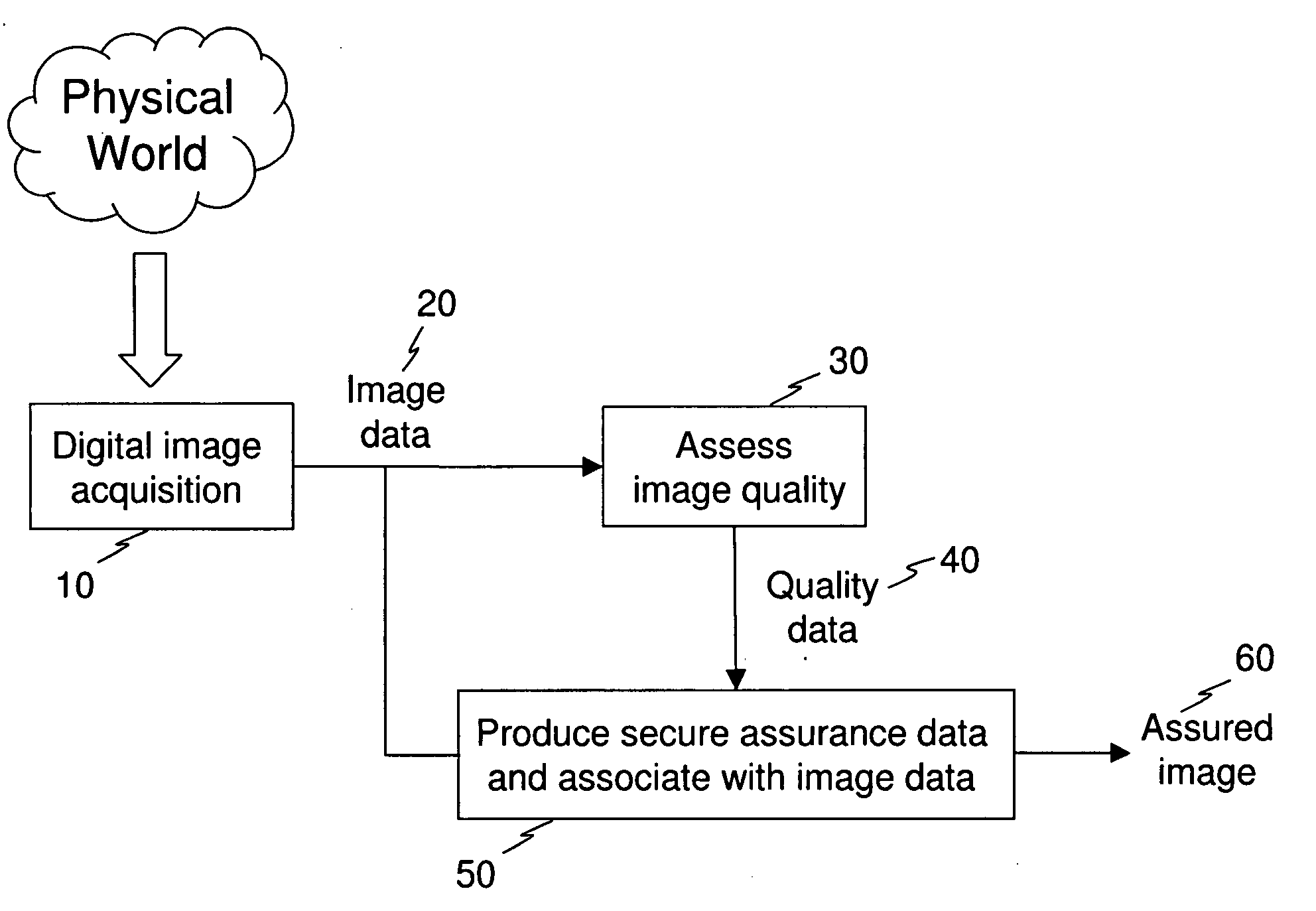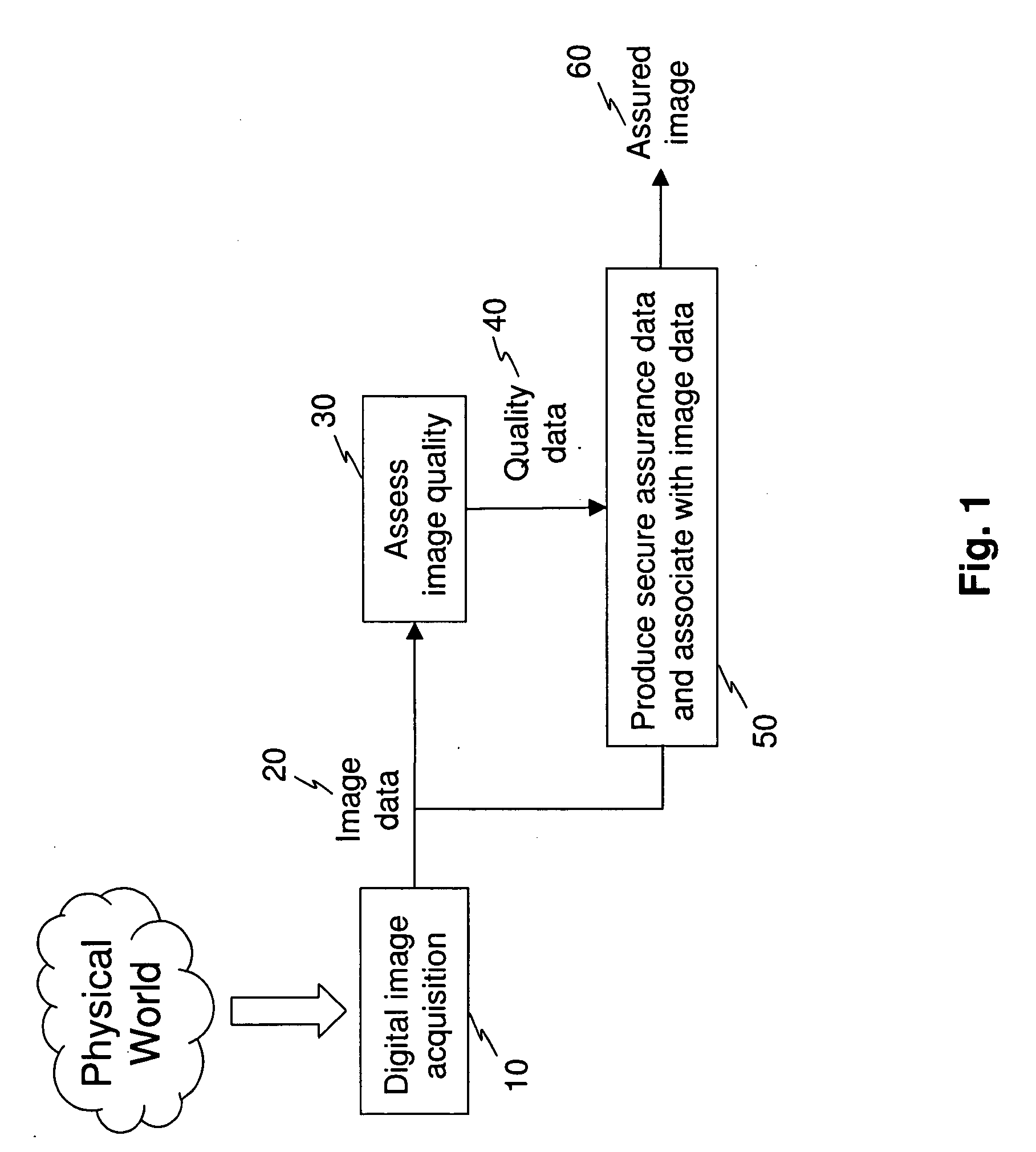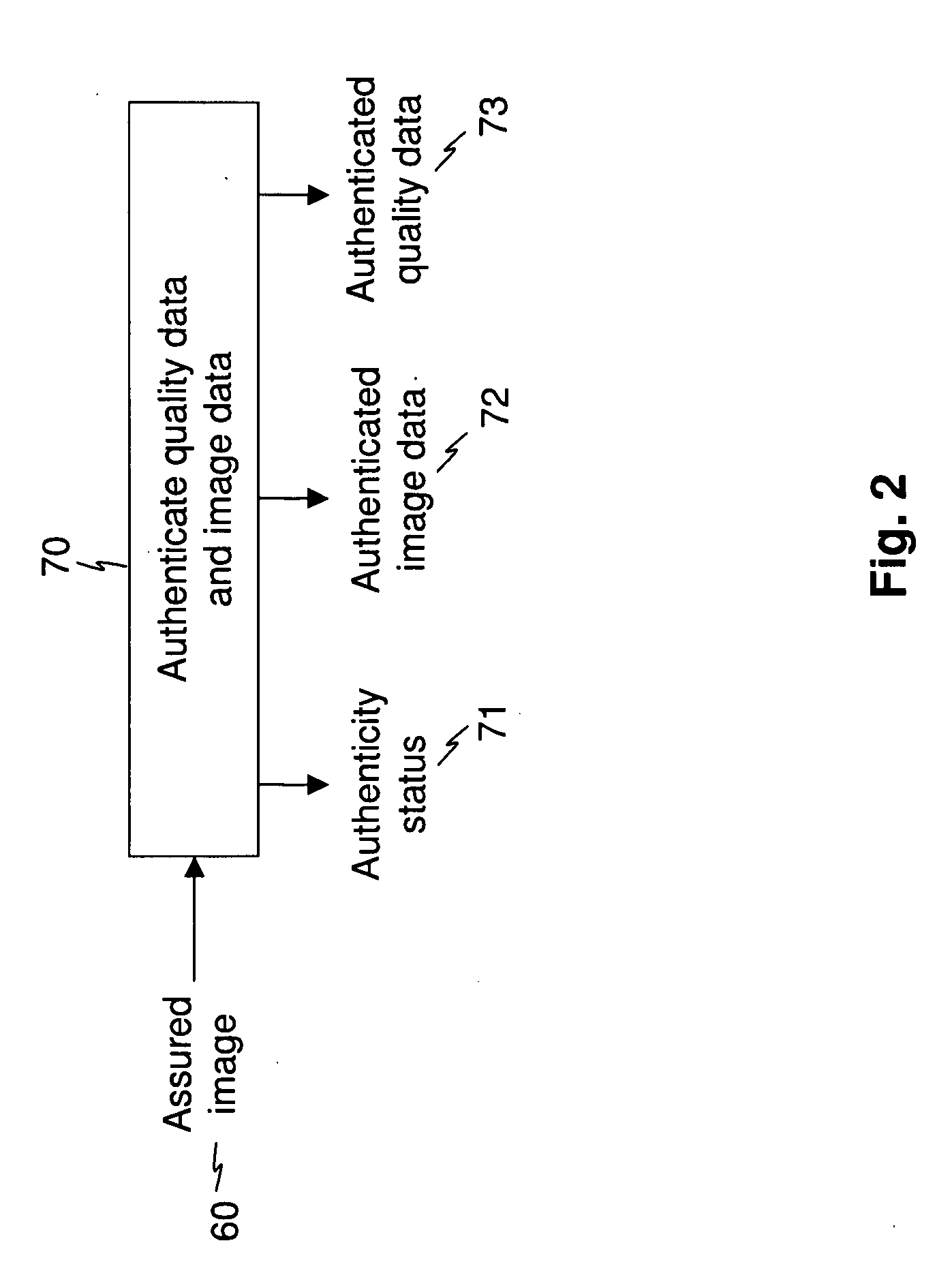Organizations also spend vast amounts of money on capturing day-to-day activities with
digital image capture devices, such as inspection cameras for manufacturing processes, forensic crime-scene cameras, in-car police cameras, automated teller
machine (ATM) cameras, and surveillance cameras for monitoring facilities, equipment, and personnel.
However,
encryption can be computationally expensive for large amounts of data, such as is the case for
high resolution images and video sequences.
While
encryption and digital signatures allow the integrity of image data to be verified, they do not address the issue of the quality of the image data.
The
digital image data that represents a physical medium or scene could be meaningless, erroneous, or artifact-laden for a variety of reasons, such as a
scanner that is defective or a camera that is out of focus, for example.
In such cases, the techniques for authenticating data as described previously may be of limited value because they may be protecting data that is worthless.
Companies that are responsible for the scanning of important documents for governments, financial institutions, and other concerns may become liable for loss of valuable information if the scanned image quality is insufficient and the original physical documents have been destroyed.
Even if the original documents are still available, significant costs may be incurred in rescanning.
End users of scanned documents may also be affected by
poor quality because of a diminished ability to extract or interpret the information that was contained in an original document.
Likewise, law
enforcement agencies may be hampered in their identification and prosecution of criminals if surveillance video images have insufficient quality.
Banks are not required to keep the original check, and it is typically destroyed or “truncated” to reduce maintenance costs.
However, banks that scan checks under Check 21 are liable for any financial losses associated with
poor quality images.
For example, a
poor quality image may require special handling, which incurs extra costs.
A
bank that receives a poor
quality check image might require the originating
bank to rescan the check, or the receiving
bank might simply assume liability for the cost of the check if it is a small dollar amount.
The result is increased service costs and delays in completing check clearance, as well as the potential loss of good will with customers.
However, given the tremendous number of images that are produced daily, a human-based
quality control solution is not economically viable in many applications.
In addition,
human error rates may be significant due to various factors, such as fatigue and lack of training.
However, the intermittent use of test targets doesn't necessarily provide information about the image quality that is achieved for the capture of a particular physical medium or scene.
In some applications, it may be possible to include a
test target in every image that is captured by a device, but this can be costly and often impractical.
Moreover, it still may be the case that quality of the captured medium or scene is not fully reflected in the quality that is determined from the included
test target data.
For example, an adaptive
image processing algorithm that automatically controls image brightness and contrast might not produce the optimal code values for the captured medium or scene because of the
background color in the image, while a
test target may still be rendered appropriately.
Current applications that assess image quality, such as Check 21
processing systems, do not secure the image quality
metrics and hence are susceptible to tampering of the
quality data, which may result in an inefficient
workflow and financial losses.
It is easy to imagine that a digital scan of a check may be vulnerable to courtroom challenge on the basis of image quality, despite the use of digital signatures for the image data itself by the bank.
If the quality
metrics do not meet predetermined quality specifications, an assured document is not produced.
This approach can be problematic with
image capture devices that operate in dynamic environments, such as with an outdoor
surveillance camera, where weather and lighting conditions will change frequently.
Thresholding against individual quality
metrics may also result in some images being accepted as having sufficient quality, when in fact a combination of image degradations produces insufficient quality.
For example, both sharpness and
noise may be within acceptable limits on individual bases, but the combination of these two degradations can result in poor quality.
The use of additional quality classes can be beneficial in some applications, but the classification of quality by using multiple thresholds applied to multiple quality metrics is difficult to accomplish in an efficient and robust manner.
However, the assessed quality class is not included as part of the secure assurance data, which can be inconvenient and computationally inefficient as it requires the secure quality metrics to be reevaluated any time the assessed quality class is required.
 Login to View More
Login to View More  Login to View More
Login to View More 


